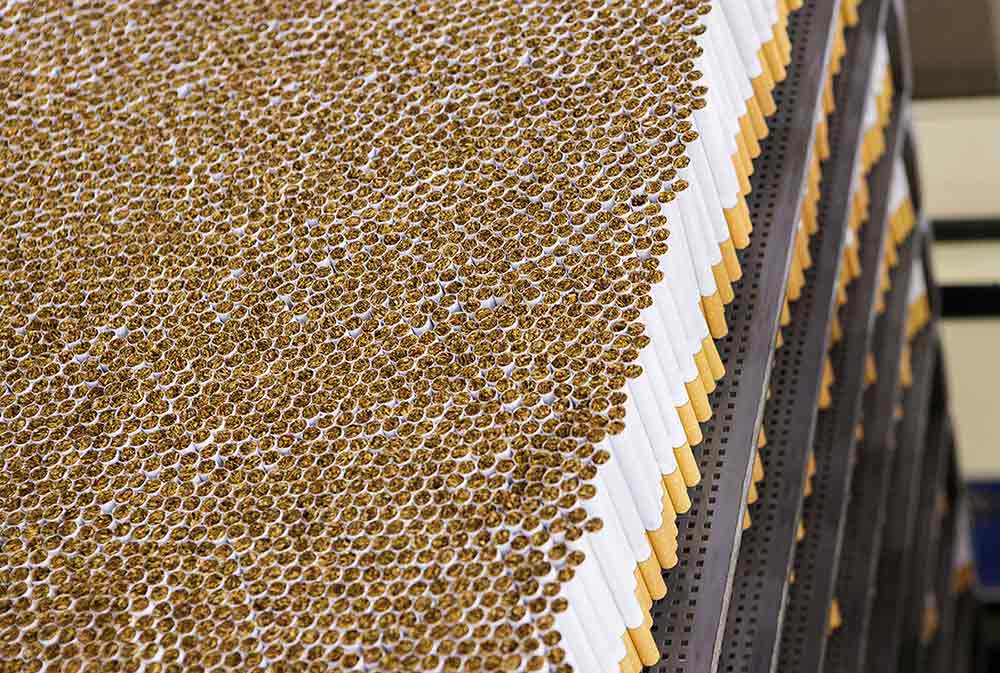- Resources
- News
-
-
Get Email Updates
Sign up for STOP's emails and never miss an update on our latest work and the tobacco industry's activity.
-
Get Funding
Ready to tackle industry interference? You could be eligible for a grant.
-
Share a Tip
Do you have information on tobacco industry misconduct in your country? Let us know.
-
Get Email Updates
Environment
October 31, 2022

When tobacco companies see an opportunity to distract the world from the harm they cause, they take it. The latest example of this is Big Tobacco’s enthusiastic participation in environmental, social and governance (ESG) reporting. ESG ratings, assigned by a myriad of third party assessors, indicate to investors, policymakers and the public how “sustainable” a company is. They take into account a company’s environmental impact, social impact and its governance.
Why would an industry that is fundamentally unsustainable embrace a system designed to highlight sustainable and responsible companies?
Because flawed ESG rating systems allow tobacco companies to earn “perversely” high ratings, which gives the false impression that they’re environmentally and socially responsible. Even a surface-level assessment of their products and operations shows the opposite is true. And a deeper look reveals the threat these misleading ratings can pose to public health.

When the full picture is presented, it’s easy to understand that tobacco companies’ so-called CSR attempts don’t come close to rectifying the damage the industry causes.
Capitalizing on the moment
Environmental, social and governance investing, also referred to as “sustainable” or “responsible” investing, has grown in popularity. This makes sense. Given the COVID-19 pandemic, the climate crisis and on-going human rights concerns around the world, more investors and consumers want to see that companies are helping, not hurting, these issues.
Despite exacerbating COVID, worsening the climate crisis and being deemed incompatible with human rights, tobacco companies continue to seize every PR opportunity. All four major transnational tobacco companies, Philip Morris International (PMI), British American Tobacco (BAT), Imperial Brands and Japan Tobacco International, issue sustainability reports that emphasize their so-called corporate social responsibility (CSR) activities. In promoting these activities, tobacco companies can portray themselves as responsible and make a case to be included in policy discussions.
These reports, however, allow tobacco companies to cherry-pick what they include, so they can paint themselves in a positive light. To the industry’s benefit, these rankings typically measure the impact of a company’s business practices—not the products it creates. Tobacco companies share these reports widely, likely hoping to gain investor interest and positive sentiment from the public. Indeed, tobacco companies have received recognition for their “sustainable” practices. BAT claims it achieved “gold class” status in the S&P Global Sustainability Yearbook and PMI was given “A-List” status in a sustainability index by the Climate Disclosure Project.
If an investor or policymaker saw these rankings without any context, they might be persuaded to believe these tobacco giants are actually contributing to the common good.
Leaving out what really counts
To achieve these accolades, tobacco companies focus their ESG reporting on things like resource restoration projects, efforts to reduce child labor and investments in “reduced-risk” tobacco and nicotine products. What they don’t include are the more important metrics—the ones that prove these companies are unique in their ability to cause harm and are anything but sustainable.
A STOP brief about the tobacco industry’s ESG activities and reporting lays out noteworthy contradictions. For example, a tobacco company may cite the anti-littering or coastal clean-up activities it sponsors, without mentioning that it produces a portion of the trillions of toxic cigarette butts that are littered every year that poison waterways and marine life. A tobacco company may also cite its efforts to address the problem of child labor in the tobacco supply chain, but won’t disclose the ways in which it perpetuates child labor and shields itself from liability. It may also mention its investments in “reduced-risk” products, but leave out that it continues to produce and earn the majority of its profits from cigarettes.
The brief states that tobacco industry ESG reporting should include the full extent of its impact, including metrics for people killed by its products, economic losses sustained, children harmed, farmers impoverished, youth addicted, natural resources harmed and more. If these metrics were required to be included, would ESG analysts still give tobacco companies “A-List” and “gold class” status?
When the full picture is presented, it’s easy to understand that tobacco companies’ so-called CSR attempts don’t come close to rectifying the damage the industry causes.
The tobacco industry needs accountability, not praise
The tobacco industry’s misleading ESG reporting and rankings pose two major risks: People can become distracted from the actual damage the industry causes, and tobacco companies may be seen by governments as legitimate voices to have at the table when creating health, environment, trade and other policies. Both of these can harm public health.
The tobacco industry should not be praised for its CSR, but held accountable for the damage it has caused to health, the environment and economies. A first step toward accountability around ESG reporting is to ban the promotion of CSR activities, as this can be considered a form of marketing. Countries that are Parties to the World Health Organization Framework Convention on Tobacco Control (WHO FCTC) are obligated under the treaty to ban tobacco advertising, promotion and sponsorship. In line with the WHO FCTC, governments also must take steps to protect policies from tobacco industry influence, including policies affecting ESG reporting.
Help STOP hold the industry accountable. Let us know if you see industry interference in your country.





